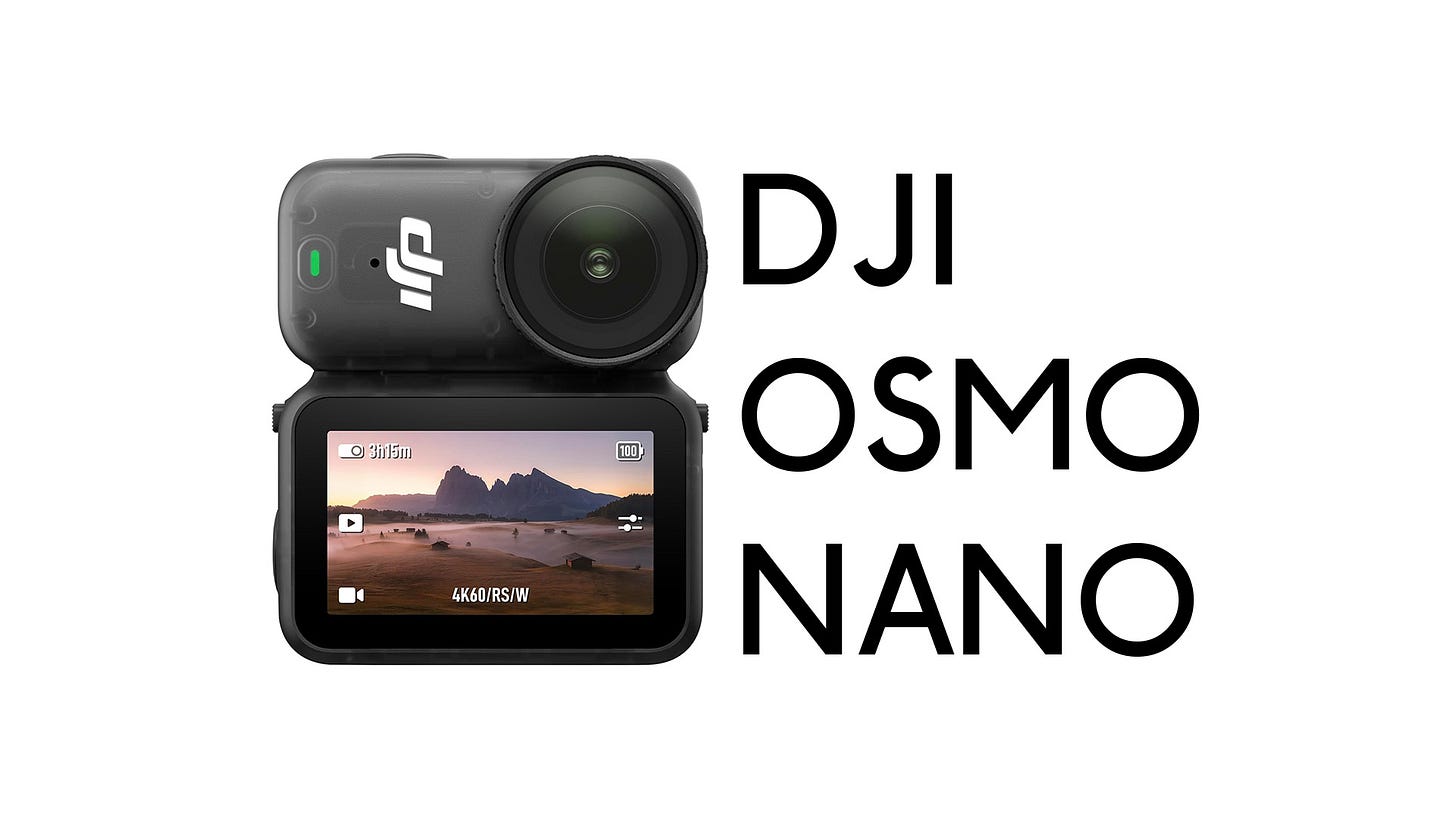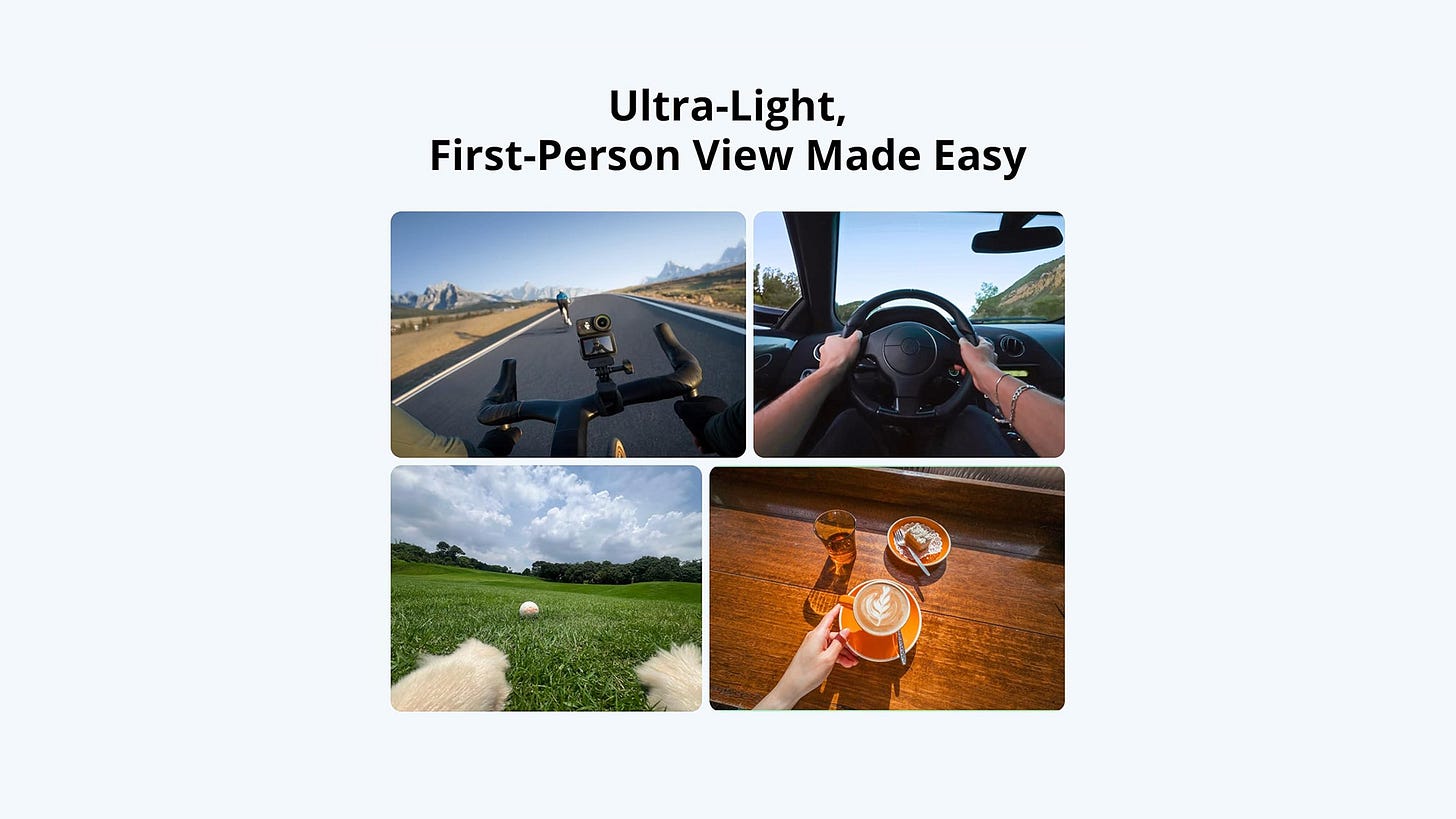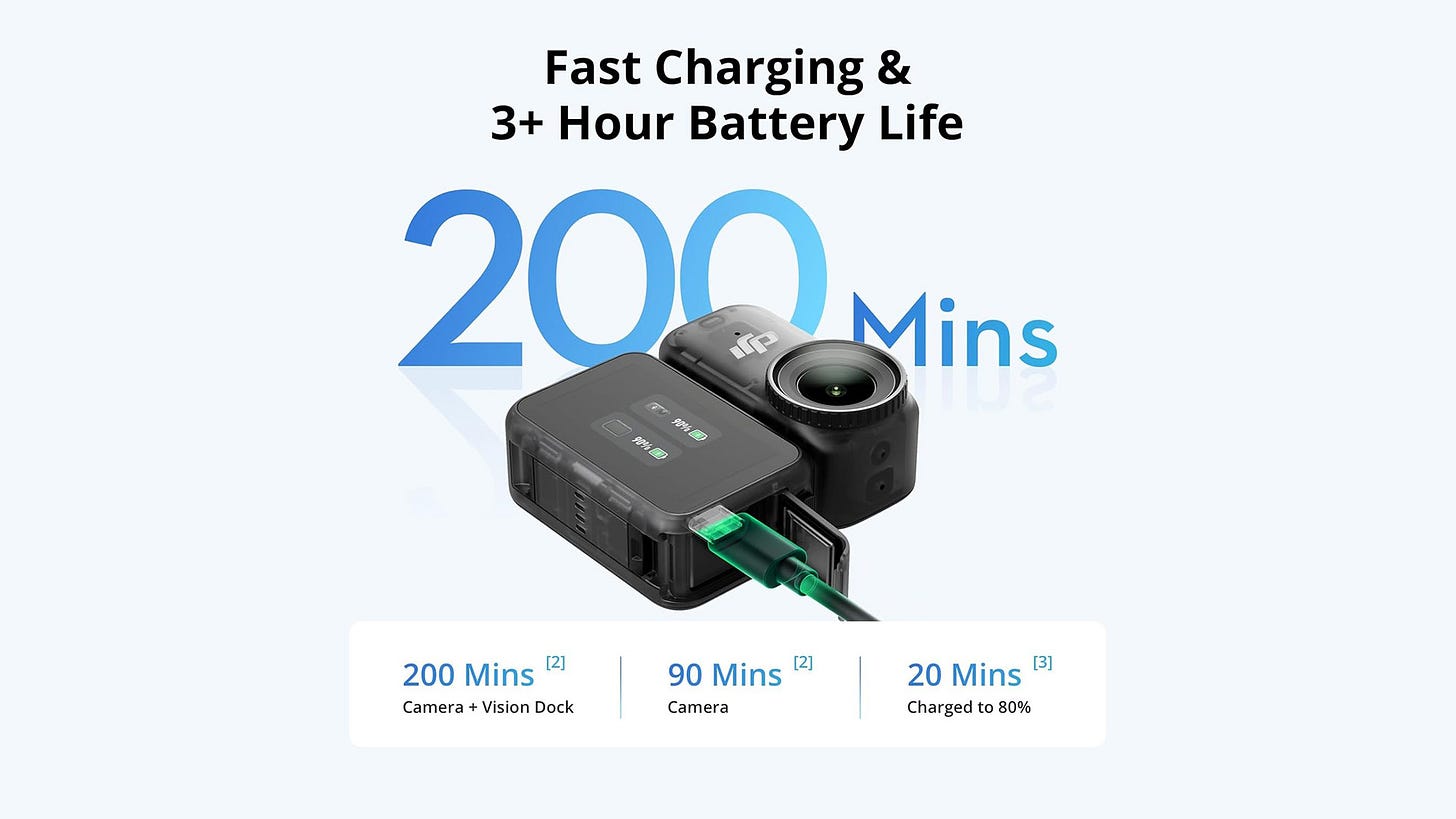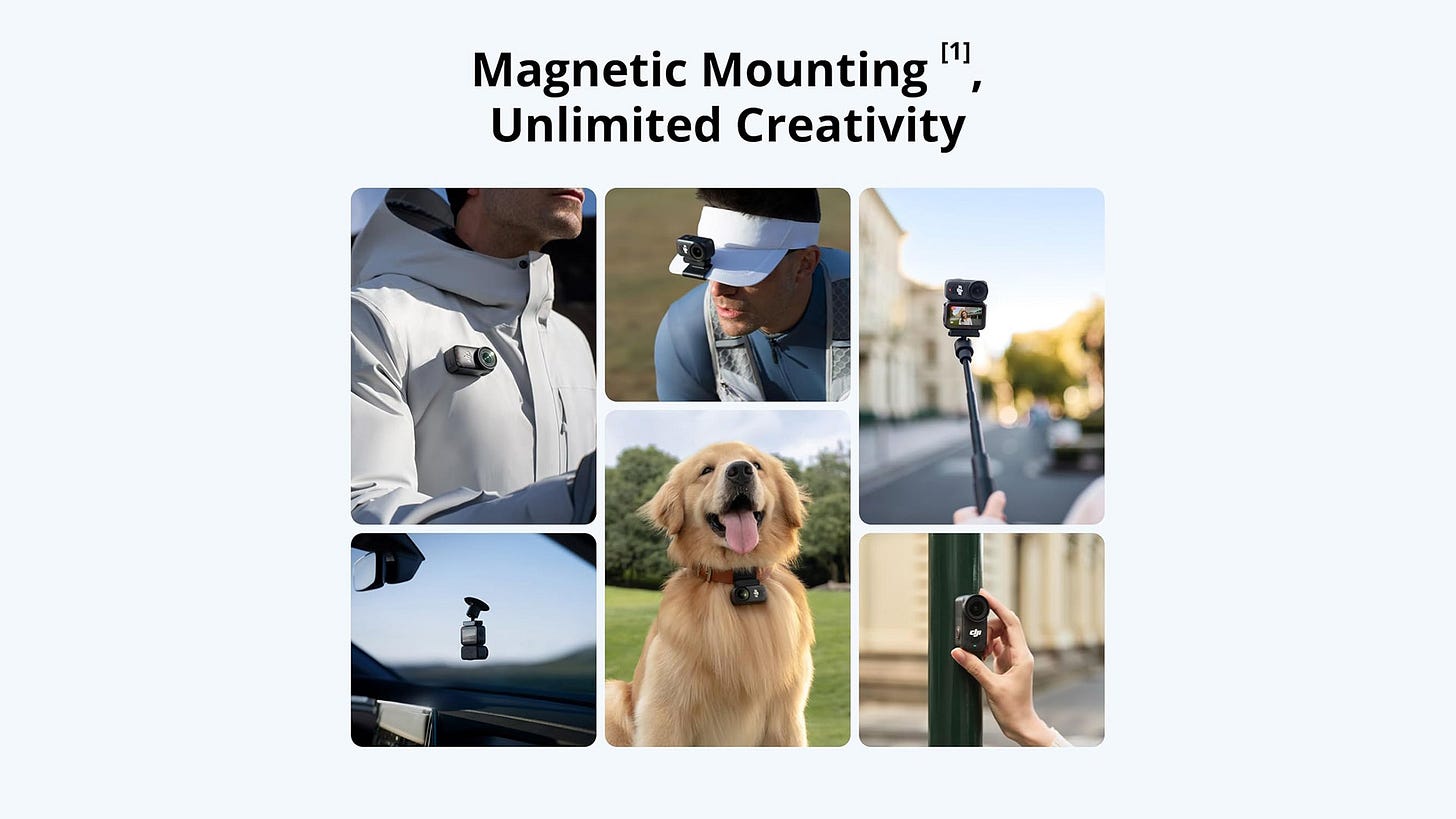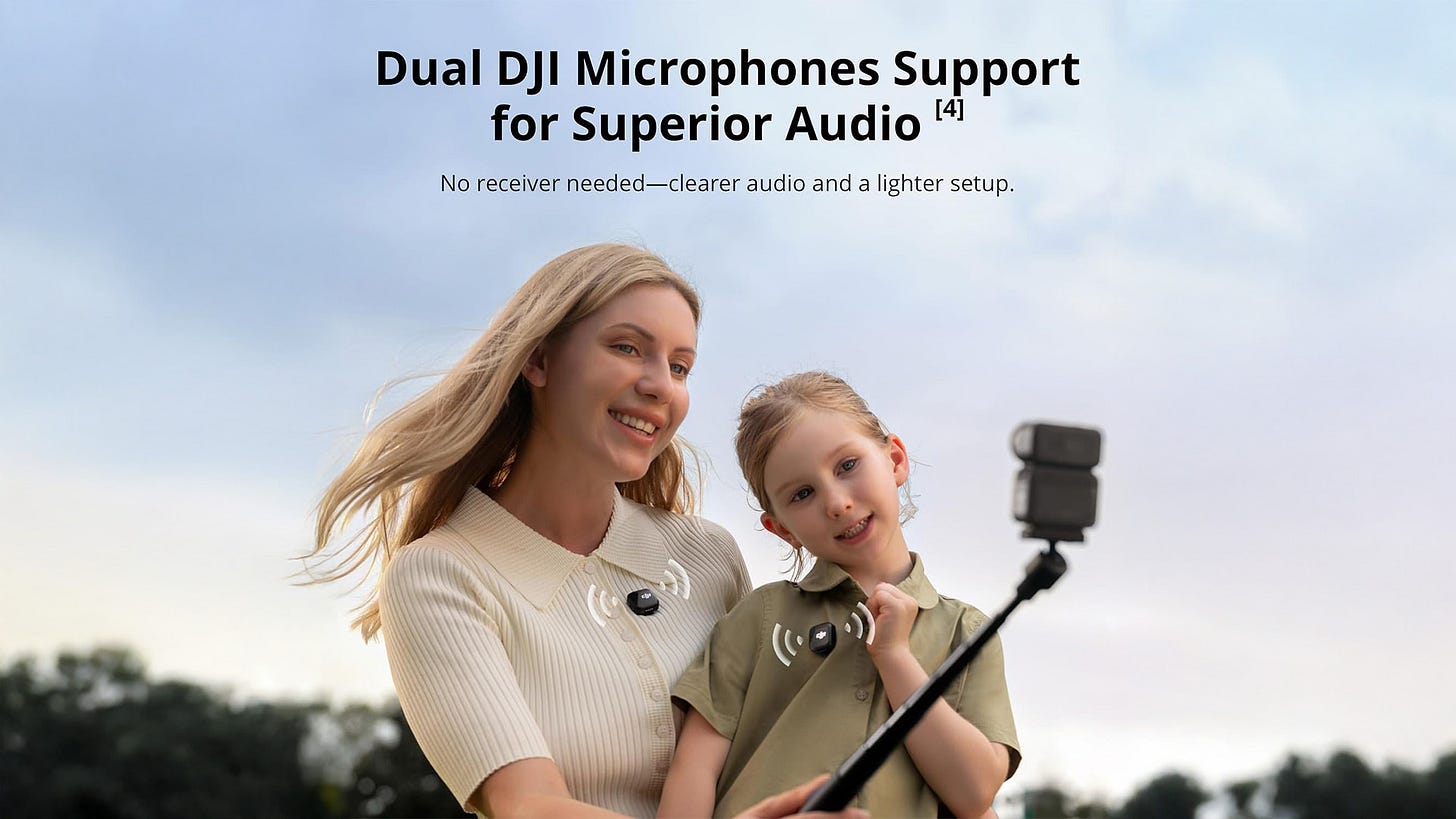DJI Osmo Nano Review
A pocketable action cam that punches above its size.
The Osmo Nano has lived in my pocket for everyday shoots, long walks and creative POV angles as B-Roll. As a tech geek, I was personally incredibly excited to have something this tiny with the renowned DJI image quality and stabilisation.
The camera snaps to mounts with strong magnets and minimal hardware, you can place it at unusual angles, on hats, on chest straps, even tucked onto rigs around talent. Sounds great right?
So is it worth adding to your kit? Find out below.
Key Features
Modular two part design with a tiny camera unit and a detachable screen dock
Waterproof up to 10m without any additional housing
Magnetic mounting with secure, minimalist adapters for fast placement in tight spaces
Image quality that tracks closely with DJI’s larger action model in most normal scenes
Electronic stabilisation with horizon balancing that rewards fast shutter speeds
10-bit recording with a proper log profile for consistent grading alongside other DJI cameras
Strong accessory ecosystem, quick pairing, and straightforward transfers
The Strengths
Modularity that changes how you shoot
The core appeal is simple, portability with real capability. The camera unit is featherweight for creative placements, the dock adds control, live view, and battery top ups. Popping the screen off to go ultra minimal, then snapping it back on to review or transfer, becomes second nature. The magnetic plates and slim adapters hold with confidence without bulky cages, which means you try angles you would normally skip.
Image quality that holds its own
In good light the Nano produces crisp detail and believable colour. The standard colour mode is punchy for quick turnarounds, the 10-Bit D-Log M profile keeps highlights and complex hues flexible for proper grading. In about nine cases out of ten it matches the larger DJI Action look closely enough that most viewers will not spot a difference. Fast motion in very low light will still challenge the sensor, that is expected for a body this small, but daylight and lit interiors look clean and confident.
Stabilisation you can trust
Electronic stabilisation keeps walking and riding footage steady, horizon balancing keeps the frame level when a mount tilts. The trick is shutter discipline, stabilisation prefers shorter exposures. Lock a faster shutter, manage exposure with ISO and ND when needed, and you get smooth motion without wobble or smear.
For sports and busy street scenes this makes the Osmo Nano feel reliable, you focus on placement and story rather than fighting horizons.
Mounting that invites creativity
Dual sided magnetic points and low profile adapters let you hide the camera where frames and cages cannot fit. Mirrors, helmet rims, undersides of handlebars, the corner of a light stand, all become viable.
The accessory kit covers common needs so you carry fewer brackets, and many bases convert quickly to a standard thread when you mix with non DJI hardware.
The Limitations
Thermals and endurance
Continuous 4K sessions can push the camera toward thermal limits, especially in warm conditions or when the dock is not attached. This was a larger issue before the latest firmware update but a few people still say it happens.
The battery on the camera portion itself lasts for just under an hour generally, while attached to the dock, it lasts around 2 and a half hours.
Small screen and first day learning
The dock display is perfectly usable for framing and menus, but it is not a comfort monitor. It is really handy that you can flip the dock around to be either a selfie monitor or POV. The DJI interface make feel a bit confusing on day one as you adjust to what flick does what, but muscle memory settles it down by day two.
Design and Usability
The Nano feels purpose built for hands free shooting. The dock gives a comfortable grip and direct access to record, playback, pairing, and power. The magnets are the star because they hold firmly without bulk, which changes the kind of shots you attempt. One of my main ways to mount was attaching it to my main camera as a POV angle for BTS.
Detaching the screen for stealthy mounts, then snapping it back on to review or transfer, is a smooth rhythm. Internal storage options mean you can leave cards at home for casual days, and high speed transfers through the dock keep the end of day offload painless.
Image, Colour, and Log Workflow
For straight to social work, the standard colour mode looks lively without plastic colour. For proper grades, 10-bit D-Log M integrates cleanly with other DJI cameras, skin and skies stay pliable, and roll off is easy to tame. I primarily found myself using it at -0.3 EV.
In low light the camera prioritises cleaner motion over absolute detail, which suits travel clips and handheld talking pieces. If you already grade in DJI colour, the footage drops into that pipeline with minimal fuss.
Stabilisation and Motion
Walking, running, handlebars, chest straps, the Osmo Nano copes well when you respect shutter speed. Keep exposure times short, use ND to hold shutter in bright scenes, and let horizon balancing do its work if you need.
High frame rate modes are on offer for slow motion, just accept that they will ask more of the sensor so will not be the ‘full’ quality of standard 4K, and plan your battery accordingly.
Audio and Accessories
On body microphones are surprisingly clear for a camera this small and wind handling is sensible. However once you pair it with external microphones like the DJI Mic Mini as I did, it really turns into something special.
The dock can act as a remote with live view when the camera is tucked out of reach, allowing you to keep track of your levels. Many magnetic bases convert to a standard thread, which keeps your mixed mounting kit simple too.
Who Is It For
Creators who value portability and fast, secure mounting
Riders and runners who want clean POV without a bulky cage
Editors who already grade DJI log and want a simple match to bigger cameras
Filmmakers who need a dependable pocket camera that disappears until the moment you need it
The Verdict
Osmo Nano is the action camera you actually bring with you. The modular design lets you shoot light or fully managed, the magnetic system rewards experimentation, and stabilisation delivers in most situations. Image quality sits close to the larger DJI Action model in most daily scenarios, which is high praise for something this small.
The experience is exactly what a pocketable action cam should be, fast, capable, and happy to live everywhere your bigger cameras cannot go. If you value portability, creative mounting, and footage that plays nicely in a grade, this is a smart pick.
You can pick up the 128GB DJI Osmo Nano Standard Combo - HERE
(This is an Amazon affiliate link, costs you nothing extra, but will help support the Magazine through referral commissions.)


